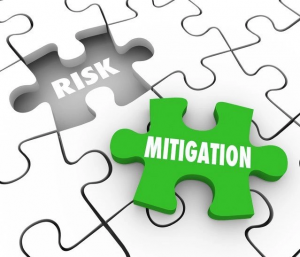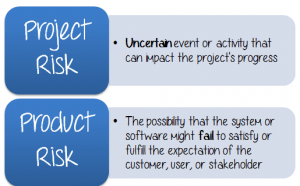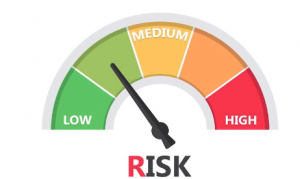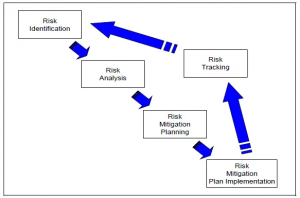Risk Mitigation in Testing
Risk mitigation is a strategy companies use to prepare for and mitigate the impact of hazards. Risk mitigation, like risk reduction, involves taking measures to lessen the negative impact of risks and disasters on company operations. Cyberattacks, natural disasters, and other occurrences that create real or virtual harm are some threats that might endanger a firm. One aspect of risk management is risk mitigation, and how it is implemented will vary per organization.

Risks may come from many of different things, such as uncertainty in global markets, threats from project failures (at any stage of design, development, production, or sustaining of life cycles), legal liabilities, credit risk, accidents, natural disasters, enemy attack, or events with unknown or unpredictable root causes.
What is the risk in software testing?
Software testers can estimate the likelihood that prospective risks will present a significant issue before taking steps to mitigate them by discovering, assessing, and predicting potential risks, as well as by estimating the level of threat they pose and the possible adverse effects they could bring. This technique is referred to as risk management in software testing.

Regarding software testing, all risks fall into one of two categories. These are:
1. Product Risk:
These risks relate to issues, errors, and/or system breakdowns exclusive to the software application you are evaluating. Introducing new software technologies, such as unfamiliar programming languages or integration features, or general issues with system functionality, reliability, usability, security, maintainability, or performance, are examples of product risks. Other risks include complex features that could negatively affect the product, such as upgrades or system migrations.
2. Project Risk:
These risks concern potential issues with the software’s creation and development process rather than the finished product itself. These could result from internal or external factors, such as development delays, a lack of funding for testing or fixes, and a staffing shortage that makes it difficult to identify and/or address potential product risks, to name just a few.
What determines the level of risk in software testing?
Once potential risks have been identified in the software testing process, next it is essential to determine the level of this risk – this process is called risk analysis and risk-level appointment.

Evaluating the possibility of an identified risk occurring as well as the potential magnitude of the consequences this risk could have on an organization and its stakeholders, should it do so, are typical steps in determining the level of risk. The frequency of occurrence and the simulated impact that can be seen under test conditions allow for the measurement of both likelihood of occurrence and the potential magnitude of impact. Risks discovered through testing and analysis can then be given a “level of risk” based on a predetermined set of standards.
1. High:
This risk’s effects would be extremely adverse and possibly intolerable. If this risk materializes, the organization could ultimately suffer a loss. It may be impossible to finish the software project if a high risk is found and cannot be resolved.
2. Medium:
Issues, difficulties, or flaws classified as “medium risk” may be tolerable but undoubtedly undesirable. If a solution can be found, the benefits of completing the software project will outweigh the negative risks, which could result in short-term financial loss.
3. Low:
“Low” risks are more like minor glitches or hurdles than serious threats to the project. If one of these risks materialized, there would be little to no financial loss.
You cannot begin to plan for a mitigation of these potential risks until all perceived risks have been identified and analyzed. Multiple risks will probably be small, avoidable, and simple to eliminate quickly. A backup plan may be necessary if an identified risk cannot be easily mitigated.
What does a risk management plan include?
A few steps are generally accepted by most organizations when developing a risk mitigation plan. Important components include prioritizing risk mitigation, identifying recurring threats, and keeping an eye on the established strategy.

The creation of a risk mitigation plan involves these general steps:
- List all scenarios that could occur and present risk. Each organization’s priorities and protection of mission-critical data are taken into account in a risk mitigation strategy, along with any potential risks related to the field’s particulars or the location. An organization’s employees’ needs must be considered when developing a risk mitigation strategy.
- Perform a risk assessment, which entails calculating the degree of risk associated with the events noted. Measures, procedures, and controls are included in risk assessments to lessen the impact of risk.
- Prioritize risks by grading quantified risks according to their seriousness. Prioritization is a component of risk mitigation that entails accepting a certain level of risk in one.
- Tracking risks entails tracking how seriously or pertinently they affect the organization as they change. Strong metrics are essential for monitoring risk as it changes and the plan’s ability to comply with regulations.
- Implement the plan and track your progress, reviewing how well it identified risks each time and making adjustments as necessary.
Risk reduction is not any different. Once a plan is implemented, it should undergo regular testing and analysis to ensure it is current and operating effectively. The risks that data centers face are constantly changing, so risk mitigation plans should take these changes or shifting priorities into account.



